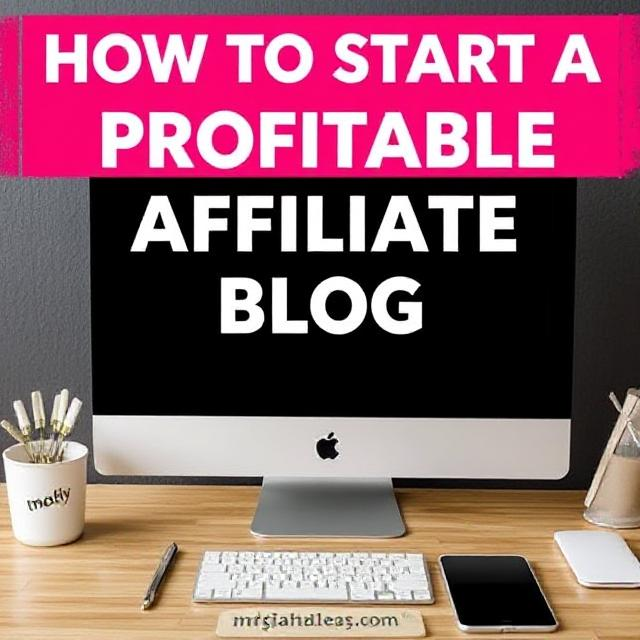Starting a profitable affiliate blog requires planning, strategy, and consistency. Here’s a step-by-step guide to help you build and monetize your blog successfully.
1. Choose a Profitable Niche
Select a niche that balances passion, profitability, and demand. Some of the most lucrative affiliate niches include:
- Technology & Gadgets – Smartphones, laptops, and accessories
- Health & Fitness – Weight loss, supplements, and workout gear
- Personal Finance – Investing, credit cards, and saving tips
- Lifestyle & Travel – Hotel bookings, travel gear, and experiences
- Online Business & Marketing – Website hosting, SEO tools, and courses
Use tools like Google Trends, Ahrefs, or Ubersuggest to research niche profitability and competition.
2. Set Up Your Blog
To create a professional and profitable blog, follow these steps:
- Choose a Domain Name – Keep it short, brandable, and niche-relevant. Use platforms like Namecheap or GoDaddy to register your domain.
- Get Reliable Hosting – Choose a fast and secure hosting provider like Bluehost, SiteGround, or Cloudways.
- Install WordPress – It’s the most user-friendly platform for blogging.
- Select a Professional Theme – Use responsive and SEO-friendly themes like GeneratePress, Astra, or Kadence.
3. Sign Up for Affiliate Programs
Join reputable affiliate programs that offer good commission rates and reliable payouts. Some top options include:
- Amazon Associates – Best for physical products
- ShareASale – Features a variety of affiliate products
- CJ Affiliate – Great for tech, travel, and finance offers
- ClickBank – Ideal for digital products and online courses
- Impact & Rakuten – High-paying programs with trusted brands
4. Create High-Quality Content
Focus on content that solves problems and naturally integrates affiliate links. The best types of content for affiliate marketing include:
- Product Reviews – Compare products and recommend the best options
- Buying Guides – Help readers make informed purchase decisions
- How-To Articles – Provide step-by-step guides with affiliate product recommendations
- Listicles – Roundup posts like “Top 10 Best Laptops for Gaming”
- Case Studies & Tutorials – Show how a product or service delivers results
Use SEO tools like SurferSEO or Rank Math to optimize your content for Google rankings.
5. Drive Traffic to Your Blog
Without traffic, your blog won’t make money. Use these strategies to attract visitors:
- Search Engine Optimization (SEO) – Target low-competition keywords with tools like SEMrush and Ahrefs.
- Social Media Marketing – Share content on Pinterest, Facebook, and Twitter.
- Email Marketing – Build an email list with tools like ConvertKit or Mailchimp.
- Paid Ads – Run Google Ads or Facebook Ads to promote high-converting affiliate content.
- Guest Blogging & Backlinks – Write guest posts for authority websites to gain referral traffic.
6. Optimize for Conversions
To maximize affiliate earnings, apply these tactics:
- Use Call-to-Action (CTA) Buttons – Make your affiliate links visible and enticing.
- Add Comparison Tables – Help readers make quick decisions.
- Leverage Popups & Banners – Promote exclusive deals and limited-time offers.
- Test Different Affiliate Products – See which ones convert best for your audience.
7. Track Performance & Scale Up
Monitor your affiliate sales using analytics tools like Google Analytics and affiliate dashboards. Identify what’s working and scale up by:
- Creating more content around high-converting keywords
- Partnering with higher-paying affiliate programs
- Increasing your blog’s domain authority through backlinks
